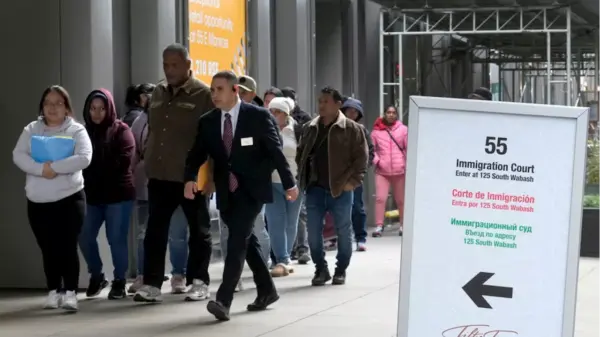BREAKING: President Donald Trump has just announced drastic cuts to the federal workforce, eliminating 60,000 jobs as part of a sweeping effort to address the nation’s budget crisis. This marks the most significant personnel reduction in over three decades and highlights a growing fiscal emergency within the U.S. government.
The Labor Department confirmed that by early June, the total federal workforce has dwindled to approximately 3 million, intensifying fears among employees as the State Department plans to lay off 15% of its workforce. Additionally, the Supreme Court has greenlit Trump’s intention to significantly downsize the Department of Education, leaving many civil servants uncertain about their job security.
The urgent cuts are a response to a structural budget problem stemming from the $2 trillion discretionary budget, which allocates 45% of its funds to employee compensation. As entitlement spending and debt service continue to rise, the government is forced to make painful decisions on job cuts to avoid massive deficit increases.
Experts point out that while the federal workforce has only grown by 1% per year since 2000, the true increase comes from federal contractors, whose numbers surged from 2.4 million to 5 million between 1999 and 2020. These contractors, while not directly employed by the government, rely heavily on government appropriations for their salaries, amplifying the impact of current budget cuts.
As layoffs loom, many employees are finding themselves in an increasingly precarious position. One government consultant shared concerns about potential contract revocation and impending job loss, stating their team plans to launch a media campaign to rally public sympathy. However, with public sentiment leaning towards budget cuts, many taxpayers are likely to support the reductions, seeing them as a necessary move to ensure fiscal responsibility.
The societal impact is profound. Friends and colleagues of those affected are grappling with the emotional toll of job loss while facing the harsh realities of a government struggling to balance its budget. The sentiment is clear: budgetary decisions will be made, and job security is no longer guaranteed.
As these job cuts unfold, the message is urgent: governments, like private firms, must adhere to a bottom line. The expectation from taxpayers for loyalty is unrealistic when fiscal constraints are tightening. With the nation’s financial landscape shifting, it is crucial for employees to reassess the stability of their positions and plan accordingly.
Moving forward, all eyes will be on the federal budget negotiations and how Congress addresses the rising mandatory spending. The cuts initiated by Trump may only be the beginning, as further reductions will be necessary to offset increasing financial pressures in the coming years.
For those facing layoffs, the best support from friends and colleagues is empathy, guidance, and honest conversations about future job security. As the landscape changes, staying informed and prepared will be vital for all federal employees.
Stay tuned for updates on this developing story.





































































